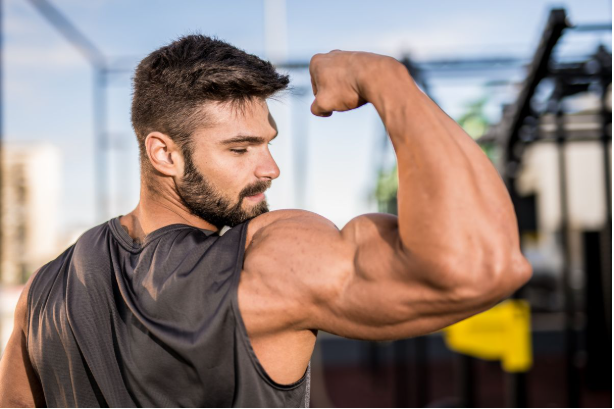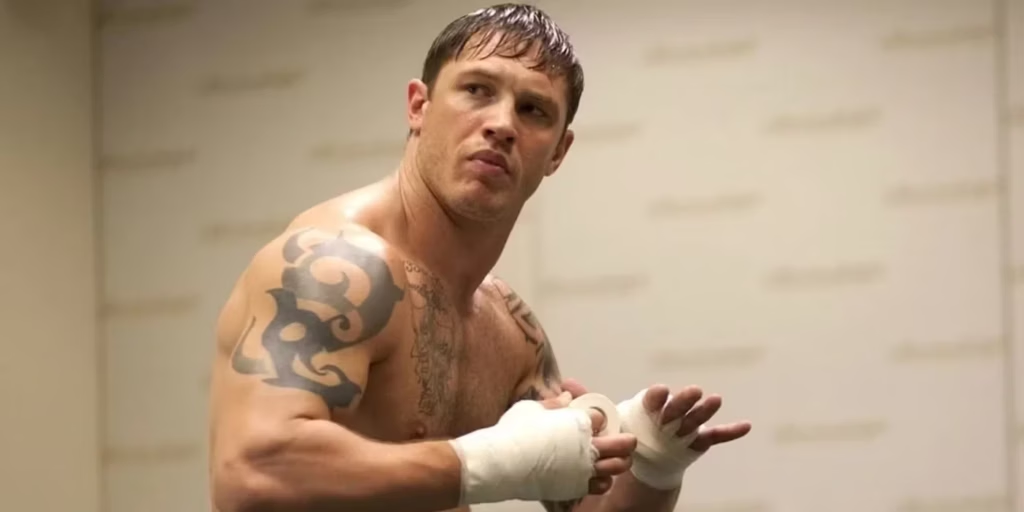Pro Skateboarder Neen Williams’ legs are spring-loaded, which explains how he’s able to flick his ninja-esque heelflips down a flight of stairs on command. However, at 37, Neen’s ability to jump off of buildings isn’t a coincidence – it’s the result of his disciplined training regime and diet.
As he celebrates his 10-year anniversary since he became a professional skateboarder, Neen joined us for an exclusive interview to explain how he’s been able to maintain his lengthy career as an athlete, and why fitness is so important to him.
You’ve also been on this fitness/health journey for a few years now, tell me how that came about, because skateboarding culture has historically been pretty anti-fitness up until recently, hasn’t it?
Yeah, I think nowadays, a lot of skaters are beginning to adopt this healthy lifestyle. But skateboarding used to be all about partying and chaos. Growing up, there was no one that was promoting taking care of your body, or wellness and fitness so that you can keep skating longer into your older ages.
So, when I got into fitness, I was just like, man, there’s a place for this. And if I could just help one skater, then it’s well worth it for me.
It’s funny because if you look at professional basketballers, these guys are making millions and millions of dollars. And yet, in many ways, skateboarding can be much more taxing on the body, but once you make good money, then skaters will call you a sellout. It’s a pretty crazy career to be in.
Yeah it can be pretty backward at times. But nowadays, once you get up to the pro ranks, most professional skaters understand the deal. I mean, I was kind of the guinea pig, you know, I kind of just went right into the fitness world. But because I believed in what I was doing, I wanted to share it and hopefully help others. It turned out to be the best decision of my life to do what I was doing.
So when did you start skating and when did you become a professional?
I started skating around age 13 and I turned pro at 26. So this is my 10-year anniversary.
Oh, congrats! And you’ve also been sober for most of those 10 years haven’t you?
Let me check my app. I haven’t had a drink in… seven years and five months.
Wow. Good job.
I don’t even think about it. It’s cool. I got my sparkling water. I got my coffee. That’s pretty much it nowadays.
So what was it that made you quit alcohol?
So basically, at 28, I tore my second ACL. A 28-year-old skateboarder is already kind of on the older side of things, so I was fearing losing my sponsorships and everything that I built to become a professional skateboarder at this point. I was partying super hard, having sleepless nights and just going on and on and on. Once I tore my ACL, I heard somewhere that if you put down drinking, you’ll heal faster from an injury. So, you know, 28-year-old me was like, well, you know, I’m drinking a lot, I’m partying a lot. I just tore my ACL, I got reconstructive surgery, I’m gonna quit drinking for the nine months to a year that it takes for this injury to heal. And then, when I start skating again, I’ll probably pick it back up.
As the months went on, I started going to physical therapy. And I have a lot of energy output, so I would do my little physical therapy to help recover my knee and rebuild my leg muscles, and I would ask my physical therapist at the time to give me other workouts. Like, hey, can you give me some upper body workouts? Can you give me some conditioning? Then he’d write it on the little dry-erase board. And, you know, this stuff kind of helped me tire myself out.
So I’ll just be doing some chest, doing some back, whatever, just anything to get some energy out. And then, when I went home, I would just lay there and play video games or something, because I wasn’t drinking or going out. So I was just sitting at home, and I started getting interested in the fitness journey more and more. I was like, oh, there’s really something here. You can use fitness to become bulletproof for skating, to avoid injuries. So I started learning about it and just like getting into it as much as I can. All my downtime as I was recovering, I was just reading books, trying to soak in as much information from my physical therapist as possible, asking them questions, seeing how he made my programming for the day and stuff. And, you know, little by little, I just kept learning and enhancing my knowledge. That just kind of sparked the fire and it just kept going after that.
Finally, after nine to 12 months, I was healed, and I was skating again. And at this point, I was so into health, wellness, dieting, fitness, that I never even thought about bringing back the alcohol into my life. I was on a different path at that point.
Damn, that’s incredible. It sounds like you’re pretty dialed in at this point. What’s your diet like?
Dieting has become a big issue lately. For some people it’s like a religion, it’s so intense. But I’m mostly focused on my performance over the aesthetic. I don’t need to have an eight pack, you know? I don’t really care about that, I only care about what I need to consume to take down any inflammation in my destroyed wrist, my hips, my knees and my back. I ask myself, what can I eat that’s going to give me the most energy, and keep me the most satiated throughout the day, so I can skate all day? I look at what fuels me and what diet I can stay on that I actually enjoy.
I basically mainly focus on eating whole foods. So like, proteins, meats, steak, chicken, salmon, fish, you know. And then for my carbs, I’ll usually eat some fruit or veggies, or some rice.
Personally, for me, I like to eat a lower carb diet because it keeps my inflammation down. It helps my joints from hurting, keeps me loose. And then like, because I’m eating mostly fats throughout the day, I’m more satiated. I’m not burning through the carbs super fast so that I need more and more food to the point that I’m over full. I’m trying to skate and not feel heavy.
I also live in the modern world. So like, I love tacos. Maybe I’ll have some pizza. Maybe I’ll have some pasta. I have to have that kind of openness to eat. So what works best for me is that I track everything I eat. I have a caloric goal, and then I work out my total daily energy expenditure (TDEE). Then I know roughly how many calories I’m gonna burn. If I’m going to have like pizza and tacos, I’ll make sure it fits in to my caloric goal for the day.

You don’t fast at all?
No, I just wake up, and start eating. Especially right now in this summer heat, I can skate in the morning from around 10AM to 1PM and then it heats up to about 100 degrees, which is probably like 38 Celsius or something. Then I can skate or train once it’s cooled down again in the afternoon. Sometimes I won’t have dinner until 10 or 11pm.
What’s your workout regimen like?
For me, Monday’s will be lower body, which will be like strength-focused. Tuesday’s will be like upper body power-focused, more focused on speed and explosive power movements. Wednesday is conditioning. So that’s heavy cardio, some lighter weights with more volume. And then I flip the switch. So I’ll take a rest day after that the third day. And then the fourth and fifth days will be lower power. So focusing on speed, like Plyometrics, very athletic training. Then Friday will be upper body strength training, so more like a bodybuilding-esque work on your chest, work on your shoulders work on your back, stuff like that. Saturday is another conditioning day after that.
Do you find it more difficult to skate with the additional muscle you’ve packed on?
Not at all. I have a training program on Ladder called Treigning Day and what we do is athletic training. So the key with this is a lot of the days that I’ve just explained, we combine explosive movements like plyometrics with strength movements. If you do five back squats and you’re moving up in weight each round, we pair that up with like squat jumps. So this way, you’re working both type one and type two muscle fibers, which is keeping you athletic and it’s enhancing your speed and your power. As you’re building muscle, you’re also building everything that you need to be an athlete.
That’s the biggest difference between athletic training and just working out or bodybuilding. If you’re bodybuilding you’re just working to put on certain muscles for looks, whereas if you’re athletic training, you’re training to build all of the things that make you a good athlete, like explosiveness, like power, speed, strength, so that you become this crazy machine. You’ll be putting on muscle, but you’re like fast and dangerous, you know? You’re springy. That’s kind of the training that I do, and that’s what I’ve been doing for almost 10 years.
What would you recommend for beginners to increase athleticism and strength simultaneously?
The best workout plan, if you haven’t worked out is just something that you can do and come back tomorrow and do again. Slowly build on that. You want to start small. Start at your own pace. And each day, as you get better each week, you start adding more until you’re at the point where you can jump in with all of us and get in on it. But until then, start with bodyweight stuff, push ups, air squats, pull-ups, do all of the basics and get strong at those. Add in those plyometrics like I was just explaining to you so you can work both muscle fibers and stay explosive so you don’t get super heavy. Keep up on your cardio, your sprints, and just keep it light agile and fast.
Awesome. And what are you working on currently?
So I’m just trying to film some new skate tricks, and I’m steady working on our program, Treigning Day for Ladder. Just trying to get more people into it, trying to help people reach their goals and just pass on the knowledge that I’ve built up.
You can find Neen on Instagram @Neenwilliams, as well as join his workout program here.















